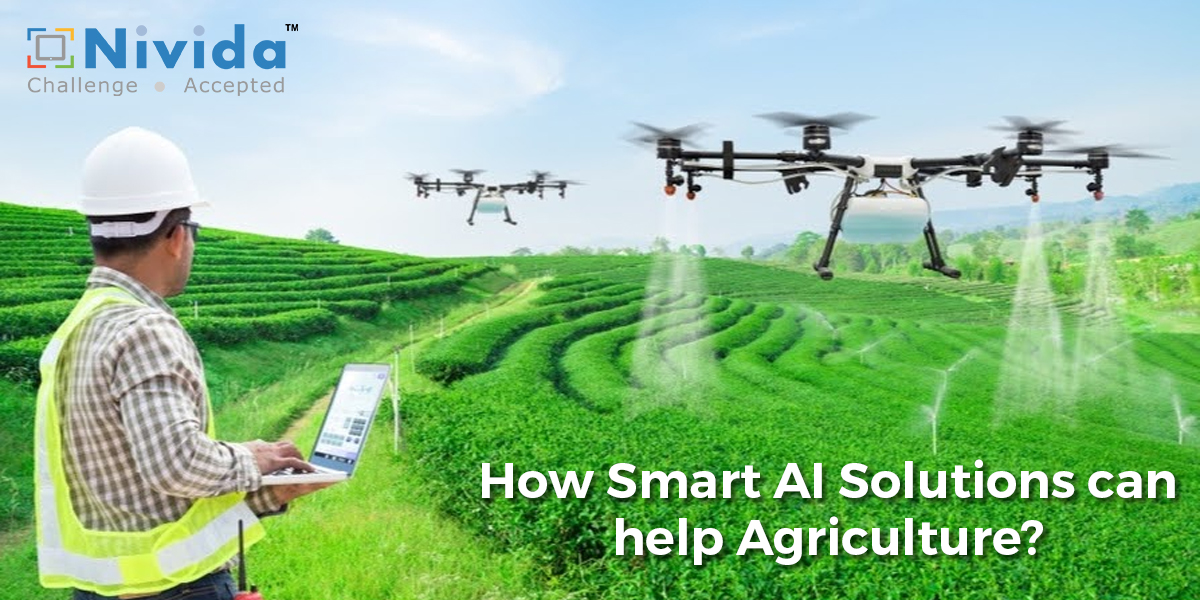The dynamics of the agricultural industry have undergone profound alterations over the course of the past decade. Large- and small-scale farms that are completely dependent on machinery that is controlled by hand are unable to compete when the availability of farmland grows increasingly limited.
As the service and information economy grows, the availability of competent farm labour and management in rural areas is a limiting factor for agricultural revenues and productivity. Agriculture that is driven by artificial intelligence (AI), just as agriculture that is driven by AI in other fields, is the greatest solution for many difficulties related to farming. Artificial intelligence (AI) is delivering cutting-edge solutions in a variety of agricultural fields, including the following:
- Checking the Land and Getting It Ready
- Sowing
- Estimating the quantity and kind of pesticides needed to control pests Disease forecasting and management
- Harvesting
- Putting Away And Moving
As long as farmers are able to overcome social and intellectual barriers, AI currently provides a wide choice of smart AI solutions for easily increasing agricultural productivity.
Computer Vision Technology:
Computer vision technology refers to any machine that can process data, record, observe, as well as explore by means of its built-in camera and computer. Accurately observing and evaluating data is a two-for-one deal here. Compared to relying on human judgement alone, this technology can more accurately draw conclusions from historical data. Therefore, when it is used in farming, it helps farmers increase output while decreasing expenses. There will be widespread upheaval in the agricultural sector because of the imminent dominance of Computer Vision Technology and deep learning technologies.
Here are a few examples of how AI-powered computer vision solutions are being put to use in the field:
- Crop and soil Monitoring:
- Botanical Weed Control Without Human Intervention:
Soil quality and its viability for growing a certain crop are both determined by the abundance and balance of nutrient-rich plant matter in the soil. Additionally, this is a major component in determining the success of the harvest. By using unmanned aerial vehicles (UAVs) to capture pictures of the ground and the crop, and then using smart computer vision models to analyse those pictures, farmers may make accurate forecasts about crop yields and take corrective action as needed.
Weed control is a major factor in every crop management strategy. Using crop monitoring photographs, computer vision technologies can accurately identify weeds. Imagine that these smart algorithms are backed up by machine learning software, and a robot is created that can autonomously de-weed. This eliminates the need for excessive amounts of time, money, and effort spent on physical labour. There will be less need for harmful herbicides as a result. Sustainable agriculture like this one is what organic really means.
The Application of Smart Sensor Technology to Farming:
Smart artificial intelligence has developed this technique to help farmers maximise yield from scarce inputs. Aeroponic farming, which uses this technique, is becoming increasingly popular.
Aeroponics:
All stages of the crop cycle may be managed with precision using this cutting-edge farming technique, which entails spraying crops that don't need soil with precisely measured mists of nutrients. Temperature, automated time interval, water-nutrient levels, pH, CO2 requirements, light intensity, etc. are all factors that affect the growth and development of crops.
Intelligent sensors, or wireless sensors, integrated into this agricultural system, will aid in the early detection and rectification of any problems. Now the farmer may quickly and easily adjust many farming variables from afar.
Integrating 5G IoT and ML in farming:
Utilizing the Internet of Things (IoT) and cloud computing in conjunction with a 5G network is the next step in agricultural innovation. With the use of remote monitoring, this form of "smart farming" will eventually make the entire crop cycle autonomous, from planting to harvesting. A survey of the effects of the 5G network on farming is conducted, as summarised in the Science Direct abstract.
Final Thoughts:
Disruptive technologies, such as those used in artificial intelligence agriculture and farming, are redefining what it means to work in the agricultural sector. Smart farming technologies, such as permaculture, aquaponics, hydroponics, etc., supported by smart AI tools, are quickly replacing the agricultural practices of the last decade.

